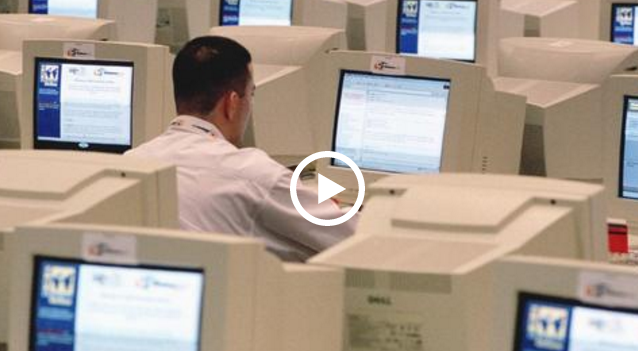In 2017, student loan debt has swelled into a $1.3 trillion crisis in the US, according to Forbes.
An estimated 44 million borrowers shoulder this financial burden. The blog Make Lemonadeestimates that the average Class of 2016 grad owes $37,172.
So, what are some coping strategies for recent grads entering the workplace owing thousands of dollars in debt?
First things first, it’s not a problem that will go away overnight.
“I really wish there was a magic bullet that could just make them all go away, but there isn’t,” John Foley, a CFP and VP at online lending website SoFi, tells Business Insider. “All my ‘tips’ still involve paying off your loans. However, there are a few strategies you can employ to make the process less painful.”
Here are some smart student loan repayment strategies for new grads:
1. Get organized
Foley recommends keeping records of all your loans — along with their amount, terms, payments, and interest rates — in a safe place.
“This sounds obvious, but if you’re like most people, you borrowed every semester — as you needed it,” Foley says. “This means you have a hodge-podge of loans of different amounts, under different programs, at different rates, from different lenders. It means you’ll now be making multiple payments to multiple loan servicers. This is a recipe for trouble. You forget a payment and boom — you’re credit score takes a hit.”
Avoid getting into trouble by automating your payments in bill pay.
2. Seek forgiveness through government programs
Foley describes this tactic as a bit of a “magic bullet” for anyone with an interest in teaching or public service.
“There are a few federal programs that can get part of your debt forgiven,” Foley says. “This involves working as a teacher at certain schools, or working for the government or a non-profit organization.”
For example, the Teacher Loan Forgiveness program will forgive up to $17,500 of loans, or even cancel your Perkins loans if you teach for five years at a school that qualifies, while the Public Service Loan Forgiveness program will forgive the balance of your direct loan after 120 qualifying payments. This option will require you to work for the government or a 501(c)(3) non-profit. If you spring for one of these loan forgiveness options, you’ll have to follow the specific program’s rules.
“It’s the government — so the rules are kind of complicated, but it’s worth the trouble to figure them out if either of these careers are in your future,” Foley says.
3. Look into income-driven repayment plans
For recent grads struggling with a low income, income-driven repayment plans are an option.
“These are plans that let you make lower payments based on your income,” Foley says. “In some of the plans, however, you pay for a longer period of time and end up making higher total payments. Some of these plans include partial loan forgiveness if you qualify.”
4. Remember that waiting will cost you
Don’t be fooled by the six month “grace period” you get before you have to start making payments.
“You are accruing interest during this period, so it’s adding to the amount you’ll have to pay over the length of your loan,” Foley says. “Take advantage of it if you haven’t found a job, but if you have — get started paying. It will reduce your final, total bill.”
5. Refinance and consolidate
“Investigate consolidating your loans and refinancing them,” Foley says. “Consolidating can make your life simpler by reducing the number of payments you need to send each month. You might be able to get a lower rate or longer term — either of which could result in lower monthly payments.”
Just remember, your chances of refinancing will improve if you pay off your outstanding credit card balances first. Also, refinancing generally makes you ineligible for income-driven repayment plans and may flout the rules of teacher and public service loan forgiveness programs.
“If you are doing either forgiveness or income-driven repayment, don’t refinance or consolidate until you are certain that it won’t hurt your eligibility,” Foley says.
6. Accelerate your payoff
“Once you’ve organized, reduced, refinanced, and consolidated — start paying them off,” Foley says. “You are paying interest on the amount you borrowed over the length of your loan. The more you owe and the longer you owe it, the more interest you’ll pay.”
You can speed things up by dedicating a small amount — $10 a month is fine, to start — as an additional payment.
“Be sure to inform your servicer that this is to be applied to the loan’s principal — not to your next payment,” Foley says. “Increase the extra amount slowly over time. Pay more if you get a bonus or a tax refund.”
When money is tight, you can nix the additional payment. But otherwise, try to stick with it.
“You’ll be surprised how much you save over the years,” says Foley.
7. It pays to be a pack rat
“Over the years I was paying off my student loan, it was sold several times and I had to change the servicer I paid each time,” Foley says. “After I made my last payment, my servicer came back to me and claimed I’d missed a payment. I had not. When they were switching servicing firms on me, the old firm did not forward my payment to the new firm properly.”
To prove he had already paid back his debt, Foley was able to send the servicer a copy of the check he had made his payment with.
“If I had not been such a pack rat I’d have had to pay that one twice,” he says. “Nobody writes checks anymore, but be sure to keep good records. You might need them.”












































